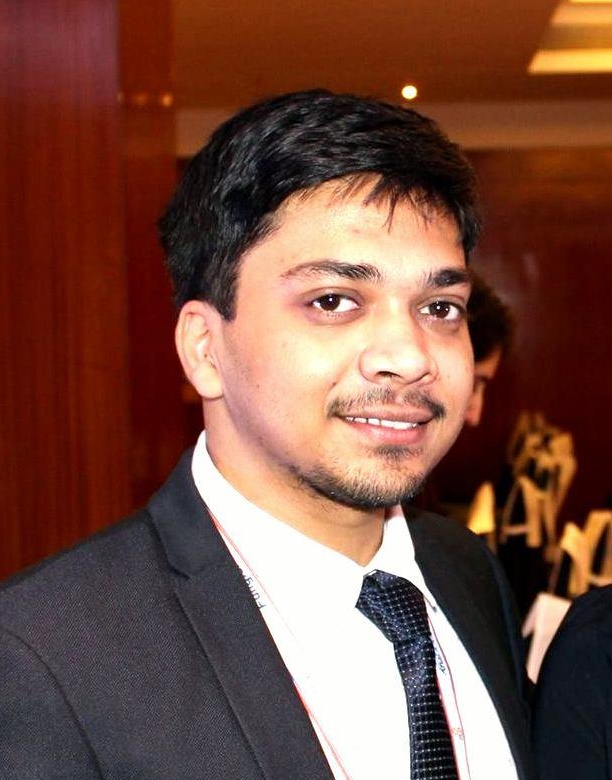
Dr. Sandip Agrawal
Dermatologist, Hair Transplant Surgeon, Cosmetologist
- MBBS(IGGMC, Nagpur)
- MD(LTMMC, Sion, Mumbai)
- Fellow in Hair Transplant & Cosmetic Surgery (Israel)
- Ex-Assistant Professor, IGGMC, Nagpur
- 11 Years Experience Overall (4 years as specialist)
Dr. Sandip Mahavirprasad Agrawal is a Dermatologist,Hair Transplant Surgeon and Cosmetologist in Ramdaspeth, Nagpur and has an experience of 11 years in these fields. Dr. Sandip Mahavirprasad Agrawal practices at The Good Skin & Hair Clinic in Ramdaspeth, Nagpur. He completed MBBS from Indira Gandhi Medical College & Hospital, Nagpur in 2011 and MD – Dermatology , Venereology & Leprosy from Maharashtra Universtity of Health Sciences, Nashik in 2018.

To understand how PRP works, it is important to be aware of the role that platelets play in healing. Platelets are a component of blood, along with red and white blood cells. When a person sustains a cut or wound, the platelets are some of the body’s “first responders” that arrive to stop the bleeding and promote healing.
Researchers theorized that if they could extract concentrated platelets and inject them into damaged areas of the body, they could accelerate healing.
To produce PRP, a medical professional will take a blood sample and put it into a machine called a centrifuge. This machine spins at a rapid rate, which separates the components of the blood. The medical professional then extracts the platelets for injection.
PRP contains a range of growth factors and proteins that speed tissue repair. As some types of hair loss result from damage to hair follicles, researchers initially hypothesized that PRP could help regrow hair by reversing the process that occurs in androgenetic alopecia. Since then, PRP has become a popular method of restoring hair growth. Doctors have also used PRP to treat injuries to the tendons, muscles, and ligaments, such as those that people sustain during sporting activities.
PRP (platelet-rich plasma) therapy for hair loss is a three-step medical treatment in which a person’s blood is drawn, processed, and then injected into the scalp.
Some in the medical community think that PRP injections trigger natural hair growth and maintain it by increasing blood supply to the hair follicle and increasing the thickness of the hair shaft. Sometimes this approach is combined with other hair loss procedures or medications.
Doctors typically use this treatment when hair loss results from androgenetic alopecia, a common condition that causes hair follicles to shrink. In males, this is called male pattern baldness. Although PRP is a relatively new approach, there is some scientific evidence to suggest that it can promote hair growth.
PRP therapy is a three-step process. Most PRP therapy requires three treatments 4–6 weeks apart. Maintenance treatments are required every 4–6 months.
Step 1: Your blood is drawn typically from your arm and put into a centrifuge (a machine that spins rapidly to separate fluids of different densities).
Step 2: After about 10 minutes in the centrifuge, your blood will have separated into three layers:
- platelet-poor plasma
- platelet-rich plasma
- red blood cells
Step 3: The platelet-rich plasma is drawn up into a syringe and then injected into areas of the scalp that need increased hair growth.
PRP is not a cure for conditions that cause hair loss. For this reason, a person would need to receive multiple PRP treatments over time to maintain hair growth results. The same is true of medications that doctors commonly use to treat androgenetic alopecia, such as topical minoxidil (Regaine) and oral finasteride (Propecia).
The doctor’s recommendations for how often a person should have PRP will vary depending on a person’s condition and the results of their initial treatment. The doctor may suggest having maintenance injections every 3–6 months once hair loss is under control.
As the PRP solution consists of a person’s own blood components, there are few risks of a reaction to the solution itself. However, people undergoing PRP treatments for hair loss may experience the following side effects:
- mild pain at the injection site
- scalp tenderness
- swelling
- a headache
- itching
- temporary bleeding at the injection site

